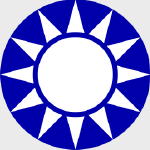Forces of Valor FOV812060C American Volunteer Group Curtiss P-40B Warhawk Fighter - Robert T. Smith, 3rd Pursuit Squadron, China, June 1942 (1:72 Scale)
"Flying is hours and hours of boredom sprinkled with a few seconds of sheer terror."
- Greg "Pappy" Boyington
 The P-40 was the best known Curtiss-Wright designed airplane of the Second World War. It was also one of the most controversial fighters, vilified by many as being too slow, lacking in maneuverability, having too low a climbing rate, and being largely obsolescent by contemporary standards even before it went into production. The inadequacies of the P-40 were even the subject of a Congressional investigation after the War ended.
The P-40 was the best known Curtiss-Wright designed airplane of the Second World War. It was also one of the most controversial fighters, vilified by many as being too slow, lacking in maneuverability, having too low a climbing rate, and being largely obsolescent by contemporary standards even before it went into production. The inadequacies of the P-40 were even the subject of a Congressional investigation after the War ended.
While these criticisms were certainly valid, it is also true that the P-40 served its country well, especially in China and Burma, during the opening phase of the War in the Pacific when little else was available to the US Army Air Corps. Along with the P-39 Airacobra, the P-40 was the only American fighter available in quantity to confront the Japanese advance until more modern aircraft could be delivered to frontline squadrons.
This particular 1:72 scale replica of an American Volunteer Group Curtiss P-40B Warhawk Fighter that was piloted by Robert T. Smith, who was attached to the 3rd Pursuit Squadron, then deployed to China during June 1942.
Sold Out!
Dimensions:
Wingspan: 6-inches
Length: 5-1/2-inches
Release Date: February 2023
Historical Account: "Tadpole" - Robert Smith resigned his commission from the USAAC in July 1941 in order to join Colonel Claire Lee Chennault's American Volunteer Group (AVG) as a "soldier of fortune" with the Nationalist Chinese Air Force. The Flying Tigers, as they were soon to be called, were in Burma training in Curtiss P-40s (actually Hawk Model 81-A-2s, or, as the British called them, Tomahawks) when Pearl Harbor was attacked on December 8th, 1941 (December 7th in the United States).
R.T. Smith (sometimes called "Tadpole" after David Lee "Tex" Hill supplied the answer to a question someone posed to Smith, "What's the 'T' stand for?") saw his first combat action over Rangoon on December 23rd, 1941, when he was credited with shooting down 1.5 Mitsubishi Ki-21 "Sally" bombers, followed on Christmas Day with credit for two more Sallys and a fighter. Promoted to flight leader in the Third Pursuit Squadron, the "Hell's Angels", Smith was credited with shooting down a total of 8.7, 8.9 or 9 Japanese planes, and was twice decorated by the Chinese government. The AVG continued to fight throughout Burma and southwest China until it was officially disbanded on July 4th, 1942.









